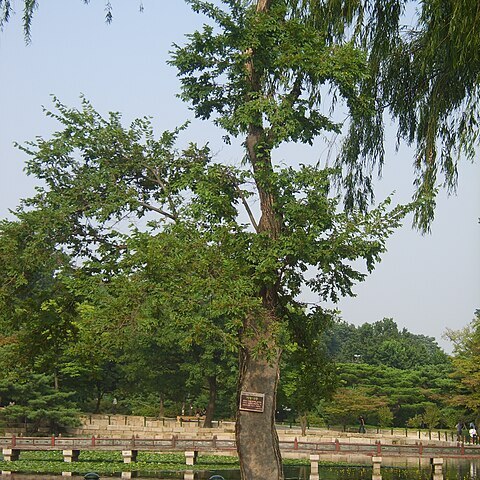A tree. It loses its leaves during the year. It grows 5-8 m high. The branches have hairs and spines. The spines are 2-10 cm long. The leaves are narrowly oval and 2-6 cm long. The flowers are joined with 1-4 in a group. The fruit is a small nutlet. It has a wing on the upper half.


